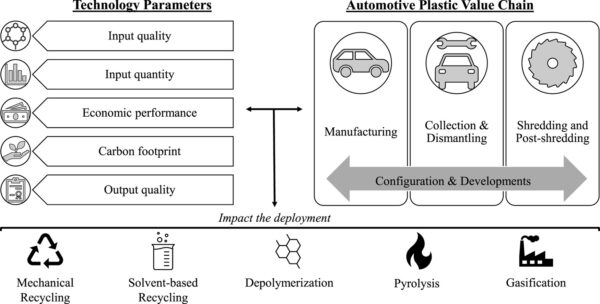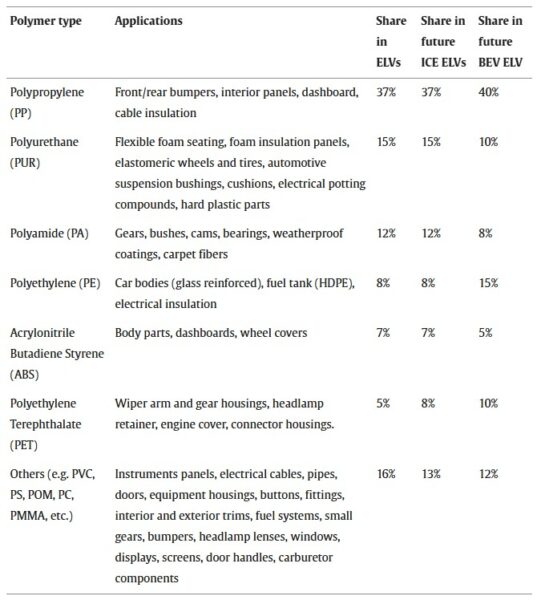Challenges and Realities of Automotive Plastic Recycling

Modern vehicles are composed of increasing amounts of plastic, raising questions about the use of recycled materials and the recyclability of automotive waste.
Within the European Union (EU), the demand for plastics in the automotive industry reached over 4.3 million tons in 2022. Over the last decade, the automotive sector has risen from 7.5 to over 10% of the EU’s total plastic demand. In Europe, Authorized Treatment Facilities collect and dismantle approximately six million end-of-life vehicles (ELVs) per year.
You can also read: From Metal to Plastic: Game-Changing Approach to Electric Vehicles.
Currently, plastics account for 13–21% of a vehicle’s total mass. Auto manufacturers expect these numbers to continue to increase. Due to growing regulatory pressure, many original equipment manufacturers (OEMs) are seeking effective recycling solutions to integrate into their manufacturing processes.
Implementing Recycled Materials in Vehicle Manufacturing
Manufacturers incorporating recycled plastic materials into vehicles must consider the characteristics of these materials. Different recycling methods can yield plastics with varying traits, each with distinct material and cost requirements. Feedstock quality, input quality, carbon footprint, economic performance, and output quality can influence the viability of using recycled plastic.

Many factors affect the viability of using recycled materials in automotive manufacturing. Courtesy of Beyond technical trade-offs: How the value chain impacts the deployment of mechanical and chemical recycling in the European automotive plastic sector.
Automotive plastics demand high-quality materials to meet technical and aesthetic standards. Mechanical recycling is not always able to achieve these results, but chemical recycling may pose a solution. Ensuring that manufacturers use the most effective techniques for each material application can allow for wider use of recycled materials.
Recycling Plastic from Electric Vehicles
Recycling automotive waste from ELVs is a complex issue with many factors to consider. Often, automotive plastic waste is 15–20 years old and can contain high levels of contamination. This contamination can arise from sources such as wood, fluid residues, and brominated flame retardants. Additionally, the use of carbon black, a black pigment commonly used in automotive plastic, can also pose issues for recycling. These concerns lead to discarding, rather than recycling, many automotive plastics, but advancements in polymer sorting may alleviate this issue.
Different polymer types and their degrees of separation also determine their recyclability. Though higher sorting allows less carbon-intensive, expensive technologies, it implies higher costs and material losses. Vehicles have many requirements from the materials of their components, so various recycling technologies are necessary in the automotive industry.

Each component of a vehicle has different material requirements, leading to a need for plastic waste sorting before recycling. Courtesy of Beyond technical trade-offs: How the value chain impacts the deployment of mechanical and chemical recycling in the European automotive plastic sector.
Planning for the Future
The increased use of plastic in the automotive industry foretells a rise in plastic waste from ELVs. Coordination across the industry can aid in maintaining the quality of plastic feedstock. Automotive manufacturing requires stringent performance standards for parts and components, which in turn demand high-quality materials. As auto makers move towards greener manufacturing, they must consider the unique demands and challenges of their industry.
